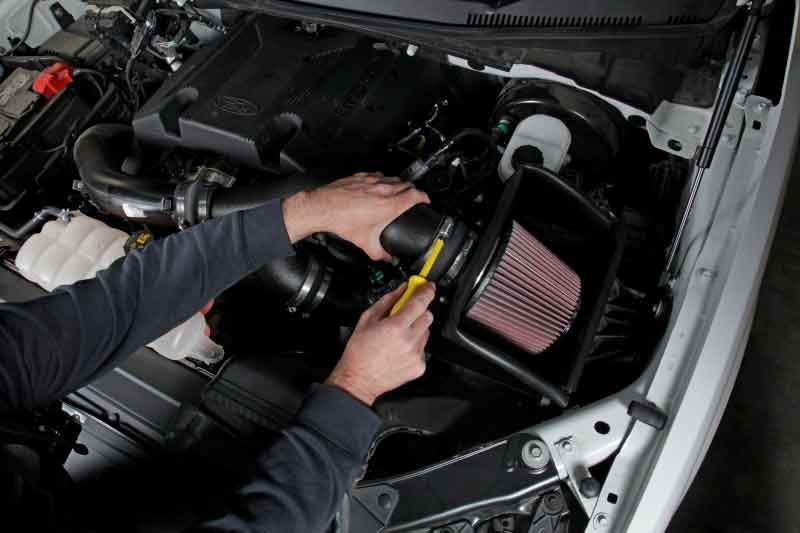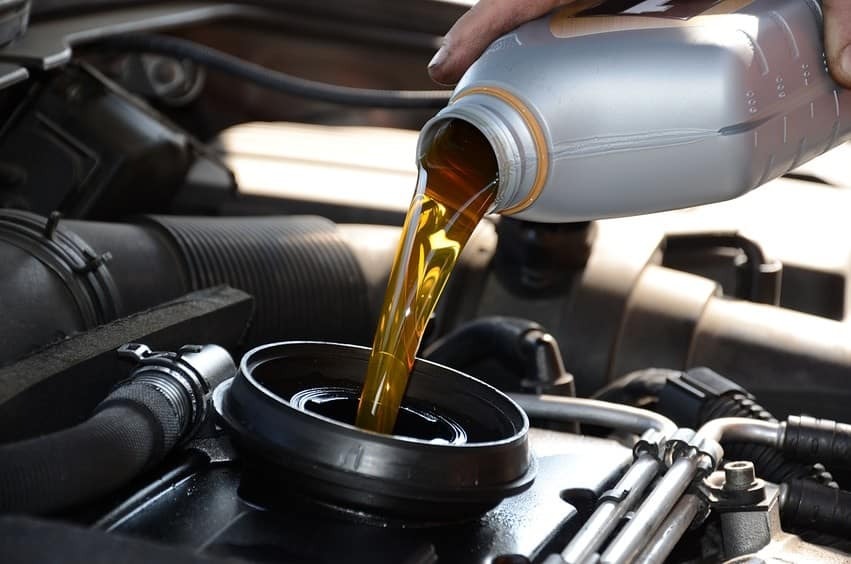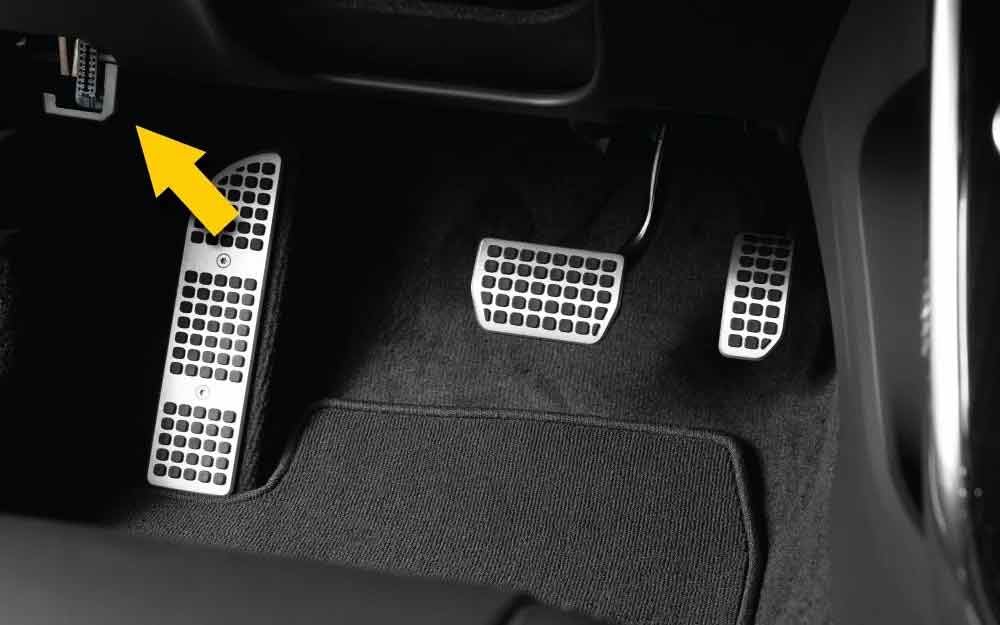10 Easy Ways to Increase Engine Performance

Do you want to boost your car’s performance without breaking the bank? There are several easy ways to increase engine performance without spending a lot of money. In this article, we will explore ten simple ways to get more horsepower and torque out of your engine. From simple maintenance tasks to affordable upgrades, these tips will help you get the most out of your vehicle. 10 Easy Ways to Increase Engine Performance

Contents
- 1 1. Change the Air Filter
- 2 2. Use High-Quality Fuel
- 3 3. Upgrade the Exhaust System
- 4 4. Install a Cold Air Intake
- 5 5. Replace the Spark Plugs
- 6 6. Upgrade the Ignition System
- 7 7. Use Synthetic Oil
- 8 8. Install a Performance Chip
- 9 9. Add a Turbocharger or Supercharger
- 10 10. Keep Up with Regular Maintenance
1. Change the Air Filter
One of the simplest ways to increase engine performance is to replace your air filter. Your engine needs a steady supply of clean air to function properly. Over time, the air filter can become clogged with dirt and debris, which can restrict airflow and reduce performance. A new air filter can improve airflow and increase horsepower.

Changing the air filter in your vehicle is an important step to maintain engine performance. The air filter is responsible for keeping dust, debris, and other contaminants out of the engine’s intake system. Over time, the filter can become clogged and restrict airflow, which can lead to decreased engine performance and reduced fuel efficiency.
Replacing the air filter is a relatively easy and inexpensive process that can be done at home with just a few basic tools. The filter itself can be purchased at any auto parts store and should be replaced according to the manufacturer’s recommendations. This is typically every 12,000 to 15,000 miles, but may vary depending on your driving conditions.
To change the air filter, locate the filter housing, which is usually a rectangular box near the top of the engine. Open the housing and remove the old filter, being careful not to let any debris fall into the intake system. Then, insert the new filter, making sure it is securely in place and properly seated in the housing. Finally, close the housing and make sure it is securely fastened.
By changing the air filter regularly, you can help maintain the engine’s performance and improve fuel efficiency, while also protecting the engine from damage due to dirt and debris.
2. Use High-Quality Fuel
Using high-quality fuel can also improve engine performance. Premium gasoline contains more octane than regular gasoline, which can help your engine burn fuel more efficiently. This can result in better performance and fuel economy. However, check your owner’s manual to see if your car requires premium fuel before making the switch.

Using high-quality fuel is an important step in maintaining engine performance. Higher quality fuel can help keep the engine running smoothly, improve fuel efficiency, and prevent damage to the engine.
When it comes to fuel, it’s important to choose the right type for your vehicle. Most vehicles require gasoline, which is available in several different grades. The most common grades are regular, mid-grade, and premium. Premium fuel has a higher octane rating than regular fuel, which can help prevent knocking or pinging in high-performance engines.
Using high-quality fuel with a higher octane rating than recommended by the manufacturer is not necessarily beneficial and can result in higher fuel costs without any increase in performance. It’s best to follow the manufacturer’s recommendations for fuel type and octane rating.
In addition to choosing the right type of fuel, it’s important to purchase fuel from a reputable source. Quality can vary from station to station, so it’s important to choose a station with a good reputation for quality fuel. Look for a station that has high traffic and that gets frequent deliveries of fresh fuel.
By using high-quality fuel and choosing the right type for your vehicle, you can help maintain engine performance, improve fuel efficiency, and prevent damage to the engine.
3. Upgrade the Exhaust System
Upgrading your exhaust system can also improve engine performance. A performance exhaust system can increase airflow and reduce backpressure, which can result in more horsepower and torque. You can choose from a variety of exhaust systems, including cat-back, axle-back, and header-back systems.

Upgrading the exhaust system is one way to increase engine performance. The exhaust system is responsible for removing exhaust gases from the engine, and a high-performance system can improve exhaust flow, increase horsepower, and give your vehicle a more aggressive sound.
There are several components in an exhaust system, including the headers, catalytic converter, muffler, and tailpipe. Upgrading any of these components can improve performance, but the most common upgrade is to replace the stock muffler with a high-performance muffler.
A high-performance muffler is designed to reduce back pressure in the exhaust system, which can increase horsepower and torque. Additionally, it can give your vehicle a deeper, more aggressive exhaust note.
It’s important to choose the right muffler for your vehicle and driving needs. There are several types of mufflers, including chambered, turbo, and straight-through designs. Each has its own unique sound and performance characteristics, so it’s important to do your research and choose the right one for your vehicle.
In addition to upgrading the muffler, other components in the exhaust system can also be upgraded for improved performance. Headers, for example, can improve exhaust flow and increase horsepower. A high-flow catalytic converter can also reduce back pressure and increase performance, while still meeting emissions requirements.
Overall, upgrading the exhaust system can be an effective way to increase engine performance and give your vehicle a more aggressive sound.
4. Install a Cold Air Intake
A cold air intake can also improve engine performance by increasing airflow. A cold air intake draws cooler air from outside the engine bay, which is denser than warm air. This denser air contains more oxygen, which can improve combustion and increase horsepower.

Installing a cold air intake is a popular way to increase engine performance. The air intake system is responsible for bringing air into the engine, and a cold air intake can increase the amount of cool air entering the engine, resulting in increased performance.
A cold air intake typically replaces the stock air intake system with a system that has a larger, more direct air path. This allows more cool air to enter the engine, which can result in increased horsepower and torque.
In addition to providing more cool air, a cold air intake can also improve airflow by reducing restrictions in the intake system. This can improve throttle response and overall engine performance.
It’s important to choose the right cold air intake for your vehicle and driving needs. There are several different types and designs available, each with its own unique performance characteristics. Some are designed for maximum performance, while others are designed for more modest gains with the added benefit of a better engine sound.
It’s also important to note that installing a cold air intake may require additional modifications or tuning to ensure that the engine is running properly. It’s recommended to consult with a professional or experienced mechanic before making any modifications to your vehicle.
Overall, installing a cold air intake can be an effective way to increase engine performance and improve airflow. With the right system and proper installation, you can enjoy improved horsepower and a better driving experience.
5. Replace the Spark Plugs
Replacing your spark plugs can also improve engine performance. Spark plugs ignite the fuel in the engine, and worn or dirty spark plugs can reduce performance. New spark plugs can improve combustion and increase horsepower.

Replacing the spark plugs in your car is an important step in maintaining engine performance. Spark plugs are responsible for igniting the fuel and air mixture in the engine, and over time they can become worn and dirty, which can result in misfires, reduced fuel efficiency, and decreased performance.
Replacing spark plugs is a relatively easy and inexpensive process that can be done at home with just a few basic tools. The first step is to locate the spark plugs, which are typically located on the top or side of the engine block. Remove the old spark plugs one at a time, being careful not to damage the surrounding components. Then, install the new spark plugs, making sure they are properly gapped and tightened to the manufacturer’s specifications.
It’s important to choose the right spark plugs for your vehicle and driving needs. There are several types of spark plugs available, including copper, platinum, and iridium. Each has its own unique performance characteristics and price points. It’s recommended to consult with a professional or experienced mechanic to determine the best type of spark plug for your vehicle.
Replacing spark plugs regularly can help maintain engine performance, improve fuel efficiency, and prevent damage to other engine components. It’s recommended to replace spark plugs every 30,000 to 100,000 miles, depending on the manufacturer’s recommendations and your driving conditions.
6. Upgrade the Ignition System
Upgrading your ignition system can also improve engine performance. A high-performance ignition system can deliver more voltage to the spark plugs, which can improve combustion and increase horsepower. You can choose from a variety of ignition systems, including coil-on-plug, distributor, and distributorless systems.

Upgrading the ignition system is another way to increase engine performance. The ignition system is responsible for creating the spark that ignites the fuel and air mixture in the engine, and a high-performance ignition system can improve spark strength and duration, resulting in increased horsepower and torque.
There are several components in an ignition system, including the spark plugs, ignition coils, distributor (in older vehicles), and spark plug wires. Upgrading any of these components can improve ignition performance, but the most common upgrade is to replace the stock ignition coils with high-performance coils.
High-performance ignition coils are designed to provide a stronger, more consistent spark than stock coils. This can result in improved combustion, increased horsepower and torque, and better fuel efficiency. Some high-performance coils also have a longer lifespan than stock coils, which can be beneficial in high-performance or high-mileage vehicles.
Upgrading other components in the ignition system can also improve performance. Upgrading to high-performance spark plugs and spark plug wires can improve spark strength and duration, while also providing a more reliable and consistent spark.
It’s important to choose the right components for your vehicle and driving needs. There are several types of ignition coils, spark plugs, and spark plug wires available, each with its own unique performance characteristics. It’s recommended to consult with a professional or experienced mechanic to determine the best components for your vehicle.
Overall, upgrading the ignition system can be an effective way to increase engine performance and improve ignition reliability. With the right components and proper installation, you can enjoy improved horsepower, torque, and fuel efficiency
7. Use Synthetic Oil
Using synthetic oil can also improve engine performance. Synthetic oil flows better at low temperatures, which can improve cold starts. It also resists breakdown better than conventional oil, which can result in better performance and longer engine life.

Using synthetic oil for cars is a popular way to improve engine performance and longevity. Synthetic oil is made from chemical compounds that are designed to provide superior lubrication and protection compared to traditional mineral-based oils.
One of the main advantages of synthetic oil is its ability to withstand high temperatures and extreme conditions. This makes it an ideal choice for high-performance and turbocharged engines that generate more heat and stress on the oil. Synthetic oil can also provide better engine protection and reduce engine wear, which can result in a longer engine life.
Another advantage of synthetic oil is its superior flow properties. Synthetic oil has a more consistent and stable viscosity compared to mineral-based oils, which can provide better engine protection during cold starts and high-speed driving.
Synthetic oil is available in several different grades and types, each with its own unique performance characteristics. It’s important to choose the right synthetic oil for your vehicle and driving needs. The recommended grade and type of synthetic oil can usually be found in your vehicle owner’s manual or by consulting with a professional or experienced mechanic.
While synthetic oil can be more expensive than traditional mineral-based oils, the improved performance and protection can be worth the extra cost. Synthetic oil also typically lasts longer than traditional oils, which can result in fewer oil changes and lower maintenance costs in the long run.
Overall, using synthetic oil for cars can provide improved engine performance, protection, and longevity. With the right oil and proper maintenance, you can enjoy a smoother running engine and a longer-lasting vehicle.
8. Install a Performance Chip
Installing a performance chip can also improve engine performance. A performance chip can modify the engine’s computer to optimize performance. It can adjust the air/fuel ratio, ignition timing, and other parameters to increase horsepower and torque.

Before installing a performance chip in a car, it is essential to understand its benefits and potential drawbacks. One of the primary benefits of a performance chip is that it can increase the engine’s horsepower and torque, resulting in better acceleration and top speed. In addition, a performance chip can improve fuel efficiency by optimizing the fuel injection and ignition timing, reducing engine stress, and prolonging the engine’s lifespan.
However, installing a performance chip may have some drawbacks. Firstly, it may void the car’s warranty, as manufacturers generally do not support any modifications to the ECU. Additionally, improper installation of a performance chip can cause serious damage to the car’s engine, transmission, or other critical components.
To install a performance chip safely, it is crucial to follow the manufacturer’s instructions carefully. It is recommended to seek the assistance of a professional mechanic or technician who has experience with the particular make and model of the car. Before installing a performance chip, it is essential to research and select a reputable brand that offers a warranty and technical support.
In conclusion, installing a performance chip can be a viable option for car enthusiasts looking to enhance their car’s performance. However, it is essential to weigh the benefits and potential drawbacks and take the necessary precautions to ensure a safe and successful installation.
9. Add a Turbocharger or Supercharger
Adding a turbocharger or supercharger can also improve engine performance. These devices compress air before it enters the engine, which can increase horsepower and torque. Turbochargers and superchargers can be expensive, but they can provide significant performance gains.

Adding a turbocharger or supercharger to a car is a popular way to increase the engine’s power output. Both turbochargers and superchargers work by compressing air before it enters the engine, allowing more oxygen to enter the combustion chamber, resulting in more power.
Before adding a turbocharger or supercharger to a car, it is essential to understand the benefits and potential drawbacks of each option. A turbocharger is powered by the engine’s exhaust gases, while a supercharger is driven by a belt connected to the engine’s crankshaft. Both options have their advantages and disadvantages, and the best choice will depend on the particular car and its intended use.
One of the primary benefits of adding a turbocharger or supercharger to a car is that it can significantly increase the engine’s power output. This can lead to faster acceleration, higher top speeds, and improved overall performance. In addition, both options can improve fuel efficiency by allowing the engine to operate more efficiently.
However, adding a turbocharger or supercharger can have some drawbacks. Firstly, it can be expensive, as it often requires modifications to the engine and other components. Additionally, it can increase the engine’s stress and reduce its lifespan if not installed correctly or used improperly.
To add a turbocharger or supercharger to a car safely, it is crucial to consult with a professional mechanic or technician who has experience with the particular make and model of the car. It is also essential to research and select a reputable brand that offers a warranty and technical support.
In conclusion, adding a turbocharger or supercharger to a car can be an effective way to increase the engine’s power output and improve performance. However, it is essential to weigh the benefits and potential drawbacks and take the necessary precautions to ensure a safe and successful installation.
10. Keep Up with Regular Maintenance
Finally, one of the most important ways to improve engine performance is to keep up with regular maintenance. This includes changing the oil and air filter, replacing worn parts, and checking for any signs of wear or damage. Regular maintenance can help ensure that your engine is running at peak performance and can help prevent costly repairs down the road.

Regular maintenance is essential to keep a car running smoothly and reliably. Neglecting maintenance can lead to costly repairs and breakdowns, which can be inconvenient and potentially dangerous. Here are some reasons why it is important to keep up with regular maintenance for your car:
- Improved reliability: Regular maintenance helps to identify and fix any issues before they become serious problems. This helps to improve the car’s reliability and reduces the risk of unexpected breakdowns.
- Extended lifespan: Proper maintenance can help to extend the car’s lifespan by keeping it running smoothly and preventing premature wear and tear on components.
- Improved fuel efficiency: Regular maintenance, such as oil changes and tire rotations, can help to improve the car’s fuel efficiency, saving you money on gas in the long run.
- Safety: Regular maintenance can help to ensure that your car is safe to drive. It includes checking the brakes, tires, and other critical components that can affect the car’s performance and safety.
Some essential maintenance tasks that car owners should keep up with include regular oil changes, tire rotations, brake inspections, and air filter replacements. It is also important to follow the manufacturer’s recommended maintenance schedule, which can be found in the car’s owner’s manual.
To ensure that your car receives proper maintenance, it is recommended to have it serviced by a professional mechanic or technician who has experience with the particular make and model of the car. Regular maintenance can help to prevent costly repairs, ensure safe driving, and prolong the life of your car
In conclusion, there are many easy ways to increase engine performance. From simple maintenance tasks to affordable upgrades, these tips can help you get the most out of your vehicle. By following these ten tips, you can boost horsepower and torque without breaking the bank. So, start taking care of your engine today and enjoy.
the increased power and performance of your car on the road. Remember to always check your owner’s manual and consult with a professional mechanic before making any upgrades to your vehicle.
Regular maintenance, such as oil changes, air filter replacements, and spark plug replacements, can go a long way in improving your car’s performance. Keeping your engine clean is also important, as dirt and debris can build up and affect the engine’s ability to perform efficiently. Regularly cleaning your engine bay and fuel system can help to prevent buildup and improve performance.
If you are looking for more significant upgrades, such as a turbocharger or supercharger, it is important to understand that these upgrades can be expensive and may require professional installation. However, they can provide significant performance gains and are popular among car enthusiasts who are looking to take their car’s performance to the next level.
It is important to remember that while increasing engine performance can be exciting and fun, it is also important to drive responsibly and within the limits of your vehicle. Always follow traffic laws and use caution when driving at high speeds. Additionally, be sure to keep your car well-maintained and always use high-quality fuel and oil to keep your engine running at its best.
In conclusion, there are many easy ways to increase engine performance, from simple maintenance tasks to more significant upgrades. By taking care of your engine and making smart upgrades, you can boost horsepower and torque and enjoy the increased power and performance of your car. So, get started today and take your car’s performance to the next level!












